
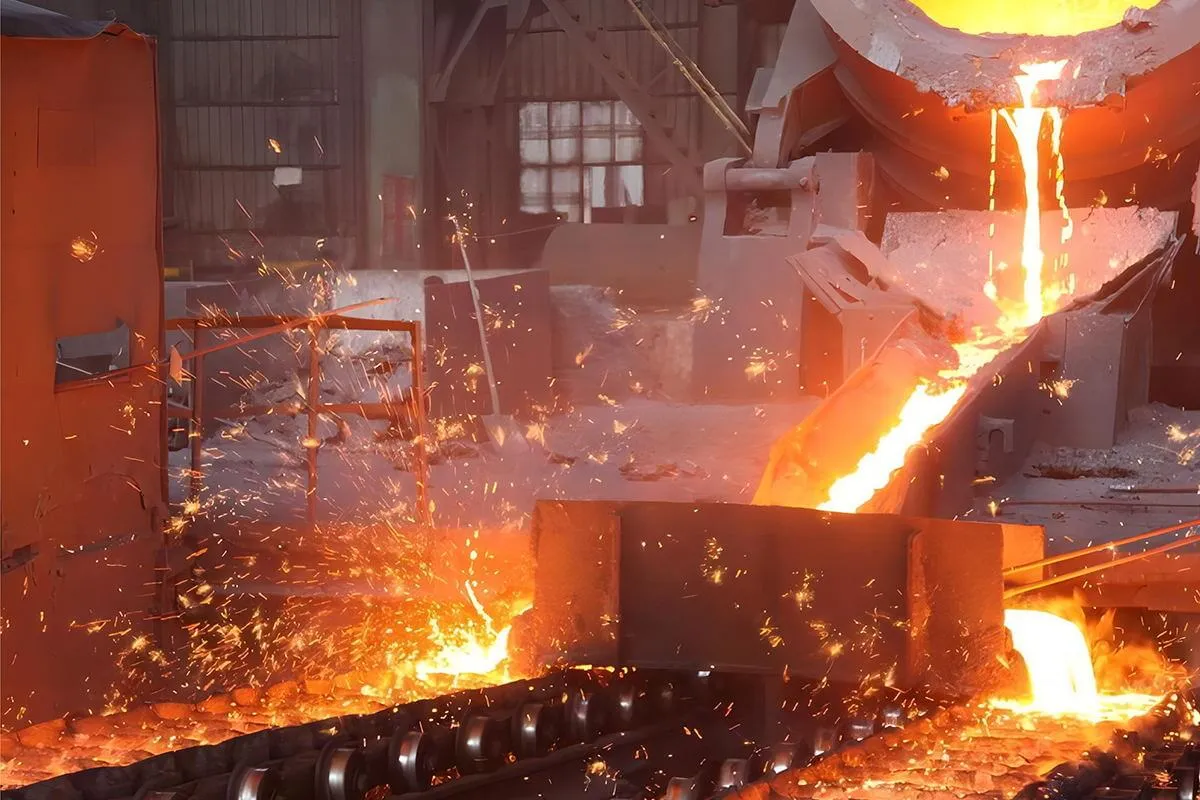
Multiple styles of connectors are used in multiple scenarios of pipe connection
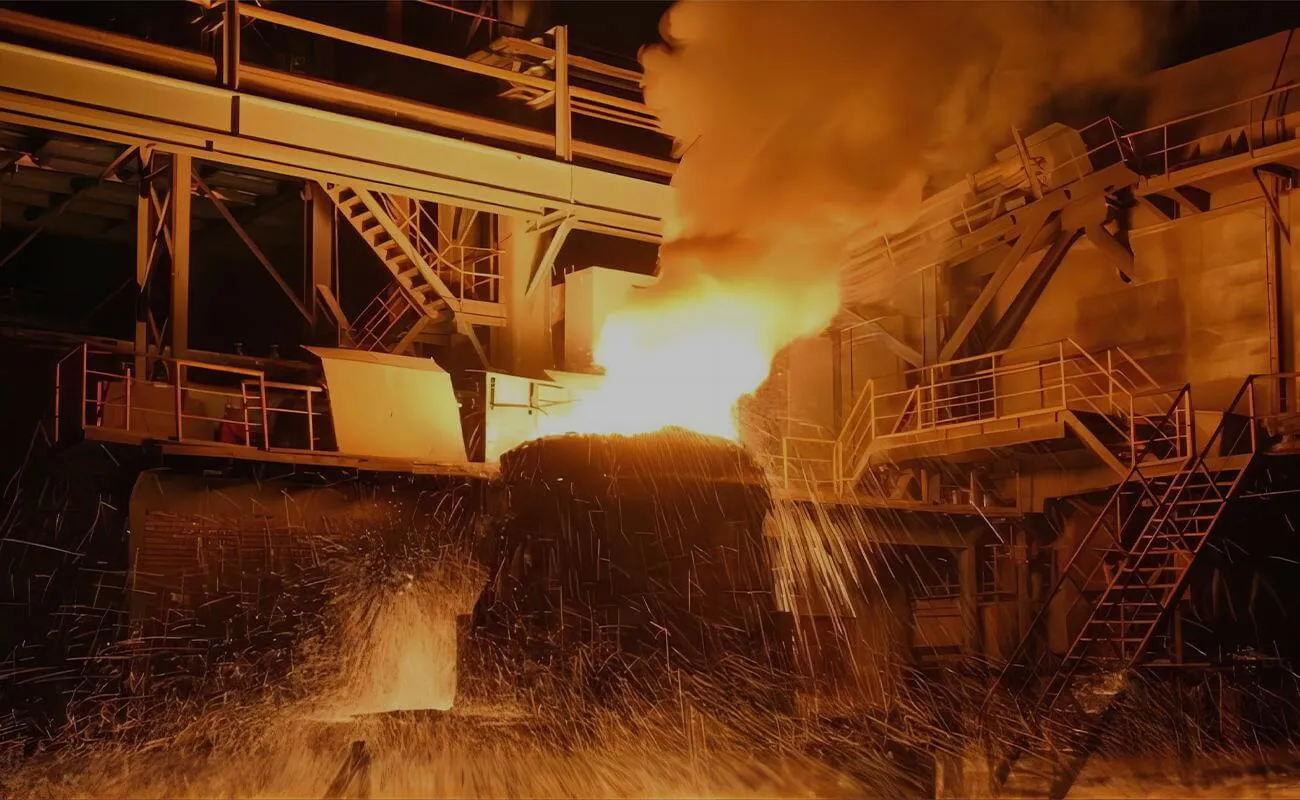
Multiple styles of connectors are used in multiple scenarios of pipe connection
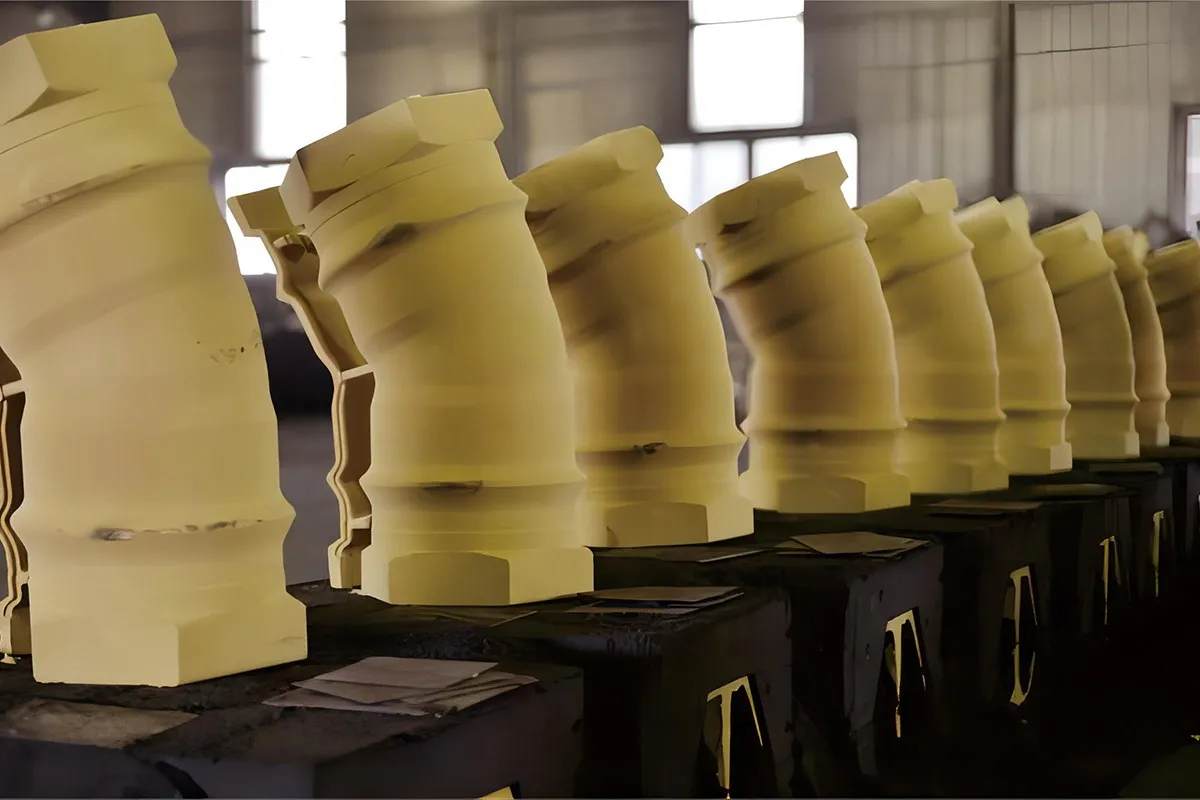
The wide range of products is suitable for multiple types of pipes, which can reduce inventory costs
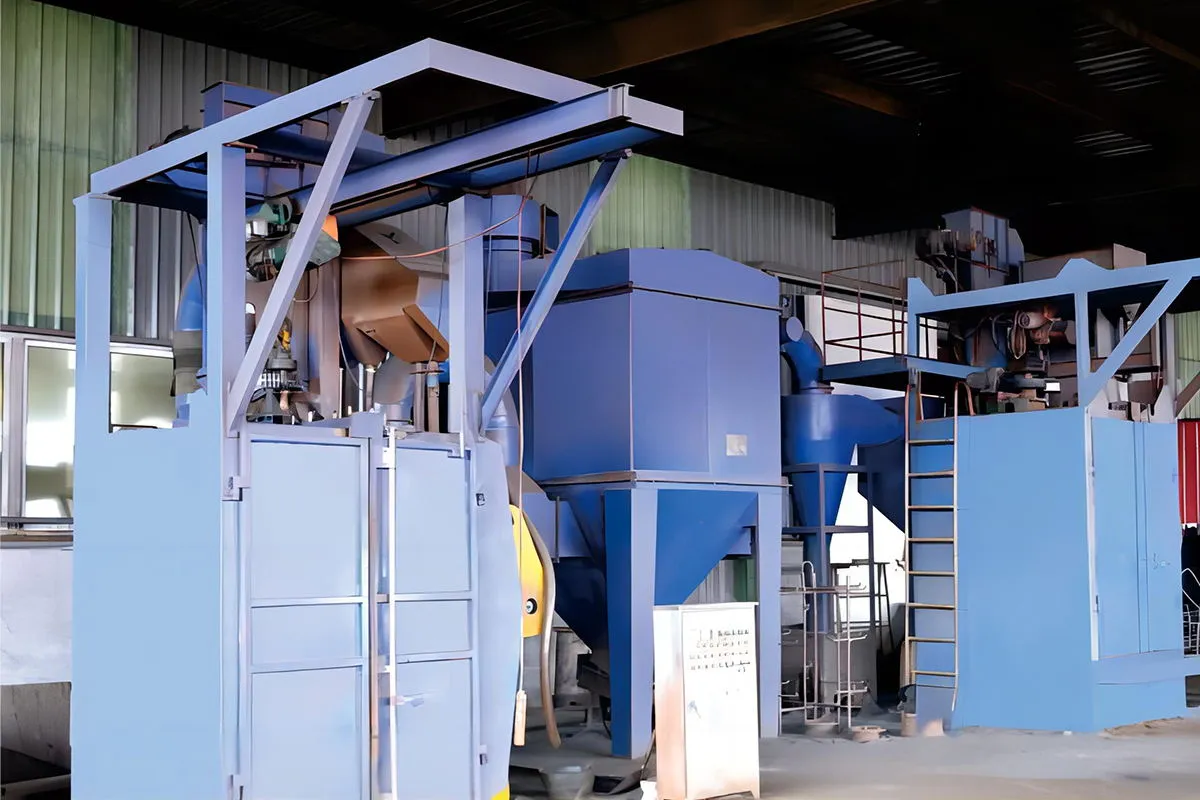
Construction on running pipelines, easy installation, fast repair, and reduced maintenance costs
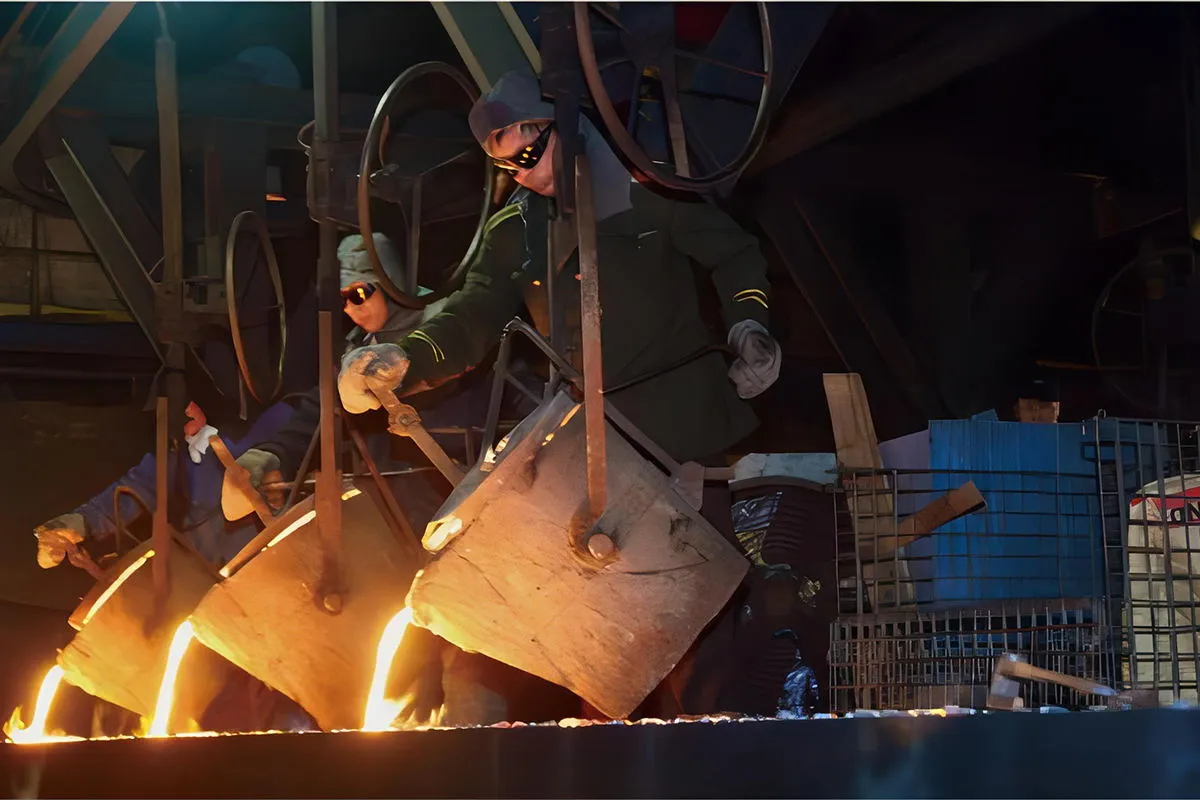
WRAS certified, can be used for drinking water

Multiple styles of connectors are used in multiple scenarios of pipe connection

Multiple styles of connectors are used in multiple scenarios of pipe connection

The wide range of products is suitable for multiple types of pipes, which can reduce inventory costs

Construction on running pipelines, easy installation, fast repair, and reduced maintenance costs

WRAS certified, can be used for drinking water
Semi/Full Circle Mini Repair Clamp provides quick repair of any pipe breakage and leakage under pressure...
Semi/Full Circle Mini Repair Clamp provides quick repair of any pipe breakage and leakage under pressure...
B2F,C2F,CF::Can be used in seawater, water, domestic sewage, crude oil, fuel oil, lubricating oil, refined...
B2F,C2F,CF::Can be used in seawater, water, domestic sewage, crude oil, fuel oil, lubricating oil, refined...
Half collar represents the latest mechanical coupling technology for connecting a variety diameter pipe...
Half collar represents the latest mechanical coupling technology for connecting a variety diameter pipe...
Half collar represents the latest mechanical coupling technology for connecting a variety diameter pipe...
Stainless Steel Compensator is used in the input and output of central air conditioning pump, fire pump,...
The Ductile Iron Falt Flange or Weld Flange is made of ductile iron material. Pressure range: PN10, PN16,PN25....
The material of the flange can include Q235、20#、A105,etc. Pressure range: PN2.5、PN6、PN10、PN16、PN25、PN40、PN63、PN100、PN160、PN250、PN320、PN400....
Semi/Full Circle Mini Repair Clamp provides quick repair of any pipe breakage and leakage under pressure...
Semi/Full Circle Mini Repair Clamp provides quick repair of any pipe breakage and leakage under pressure...
B2F,C2F,CF::Can be used in seawater, water, domestic sewage, crude oil, fuel oil, lubricating oil, refined...
B2F,C2F,CF::Can be used in seawater, water, domestic sewage, crude oil, fuel oil, lubricating oil, refined...
Half collar represents the latest mechanical coupling technology for connecting a variety diameter pipe...
Half collar represents the latest mechanical coupling technology for connecting a variety diameter pipe...
Half collar represents the latest mechanical coupling technology for connecting a variety diameter pipe...
Stainless Steel Compensator is used in the input and output of central air conditioning pump, fire pump,...
The Ductile Iron Falt Flange or Weld Flange is made of ductile iron material. Pressure range: PN10, PN16,PN25....
The material of the flange can include Q235、20#、A105,etc. Pressure range: PN2.5、PN6、PN10、PN16、PN25、PN40、PN63、PN100、PN160、PN250、PN320、PN400....
Coupling for PE pipe is suitable for pipeline, both end is socket. We use a new mechanical coupling technology...
Universal coupling is suitable for PVC pipeline, both end is socket. We use a new mechanical coupling...
Coupling for DI pipe is suitable for DI pipe, both end is socket. We use a new mechanical coupling technology...
Restrained universal coupling represents the latest mechanical coupling technology for connecting a variety...
Universal coupling is suitable for pipeline, both end is socket. We use a new mechanical coupling technology...
Coupling for PE pipe is suitable for pipeline, both end is socket. We use a new mechanical coupling technology...
Universal coupling is suitable for PVC pipeline, both end is socket. We use a new mechanical coupling...
Coupling for DI pipe is suitable for DI pipe, both end is socket. We use a new mechanical coupling technology...
Restrained universal coupling represents the latest mechanical coupling technology for connecting a variety...
Universal coupling is suitable for pipeline, both end is socket. We use a new mechanical coupling technology...
B2F,C2F,CF::Can be used in seawater, water, domestic sewage, crude oil, fuel oil, lubricating oil, refined...
B2F,C2F,CF::Can be used in seawater, water, domestic sewage, crude oil, fuel oil, lubricating oil, refined...
The dismantling joint is used to connect pipes or fittings, valves with flanges at both ends. The product...
Can be used in seawater, water, domestic sewage, crude oil, fuel oil, lubricating oil, refined oil, air,...
B2F,C2F,CF::Can be used in seawater, water, domestic sewage, crude oil, fuel oil, lubricating oil, refined...
B2F,C2F,CF::Can be used in seawater, water, domestic sewage, crude oil, fuel oil, lubricating oil, refined...
The dismantling joint is used to connect pipes or fittings, valves with flanges at both ends. The product...
Can be used in seawater, water, domestic sewage, crude oil, fuel oil, lubricating oil, refined oil, air,...
Universal Saddle Clamp is used for DI/PE/PVC and Steel pipes during opening branch, or installation of...
Universal Saddle Clamp is used for DI/PE/PVC and Steel pipes during opening branch, or installation of...
Saddle Flange Tee Clamp for HDPE/PVC pipe is used for PVC/PE pipelines during opening branch, or installation...
The main function of this product is to open a branch pipe or install the faucet or water meter in any...
The main function of this product is to open a branch pipe or install the faucet or water meter in any...
Universal Saddle Clamp is used for DI/PE/PVC and Steel pipes during opening branch, or installation of...
Universal Saddle Clamp is used for DI/PE/PVC and Steel pipes during opening branch, or installation of...
Saddle Flange Tee Clamp for HDPE/PVC pipe is used for PVC/PE pipelines during opening branch, or installation...
The main function of this product is to open a branch pipe or install the faucet or water meter in any...
The main function of this product is to open a branch pipe or install the faucet or water meter in any...
Semi/Full Circle Mini Repair Clamp provides quick repair of any pipe breakage and leakage under pressure...
Semi/Full Circle Mini Repair Clamp provides quick repair of any pipe breakage and leakage under pressure...
PVC/PE Half Collar quick repair of any pipe breakage and leakage under pressure or no pressure. Special...
FCD Stainless Steel Repair Clamp can be used for quick connection of metal, cement, asbestos and other...
FCTR Stainless Steel Repair Clamps is ring gear type pipe connector, which has strong sealing performance...
FCE Stainless Steel Repair Clamp are mainly used in the connection of new pipeline leakage can repair...
Stainless Steel Repair Clamp is mainly used for the rapid repair of pipeline leakage. It can repair the...
The ZR series stainless steel band repair clamp with Iron claw, the function same as CR. Special design...
The ZR series stainless steel band repair clamp with Iron claw, the function same as CR. Special design...
The stainless steel band repair clamp provides a quick and economic way to repair damages of different...
Semi/Full Circle Mini Repair Clamp provides quick repair of any pipe breakage and leakage under pressure...
Semi/Full Circle Mini Repair Clamp provides quick repair of any pipe breakage and leakage under pressure...
PVC/PE Half Collar quick repair of any pipe breakage and leakage under pressure or no pressure. Special...
FCD Stainless Steel Repair Clamp can be used for quick connection of metal, cement, asbestos and other...
FCTR Stainless Steel Repair Clamps is ring gear type pipe connector, which has strong sealing performance...
FCE Stainless Steel Repair Clamp are mainly used in the connection of new pipeline leakage can repair...
Stainless Steel Repair Clamp is mainly used for the rapid repair of pipeline leakage. It can repair the...
The ZR series stainless steel band repair clamp with Iron claw, the function same as CR. Special design...
The ZR series stainless steel band repair clamp with Iron claw, the function same as CR. Special design...
The stainless steel band repair clamp provides a quick and economic way to repair damages of different...
Stainless Steel Compensator is used in the input and output of central air conditioning pump, fire pump,...
The Ductile Iron Falt Flange or Weld Flange is made of ductile iron material. Pressure range: PN10, PN16,PN25....
The material of the flange can include Q235、20#、A105,etc. Pressure range: PN2.5、PN6、PN10、PN16、PN25、PN40、PN63、PN100、PN160、PN250、PN320、PN400....
The material of the loose flange can include carbon steel, stainless steel, etc. Pressure range: PN2.5~PN40....
The Stainles Steel Flexible Pipe is absorption of the piping strain in the line of water, steam, oil,...
Expansion Joint is a flexible coupling of metal pipes, which is composed of a fabric reinforced rubber...
Stainless Steel Compensator is used in the input and output of central air conditioning pump, fire pump,...
The Ductile Iron Falt Flange or Weld Flange is made of ductile iron material. Pressure range: PN10, PN16,PN25....
The material of the flange can include Q235、20#、A105,etc. Pressure range: PN2.5、PN6、PN10、PN16、PN25、PN40、PN63、PN100、PN160、PN250、PN320、PN400....
The material of the loose flange can include carbon steel, stainless steel, etc. Pressure range: PN2.5~PN40....
The Stainles Steel Flexible Pipe is absorption of the piping strain in the line of water, steam, oil,...
Expansion Joint is a flexible coupling of metal pipes, which is composed of a fabric reinforced rubber...
Semi/Full Circle Mini Repair Clamp provides quick repair of any pipe breakage and leakage under pressure...
Semi/Full Circle Mini Repair Clamp provides quick repair of any pipe breakage and leakage under pressure...
B2F,C2F,CF::Can be used in seawater, water, domestic sewage, crude oil, fuel oil, lubricating oil, refined...
B2F,C2F,CF::Can be used in seawater, water, domestic sewage, crude oil, fuel oil, lubricating oil, refined...
Half collar represents the latest mechanical coupling technology for connecting a variety diameter pipe...
Half collar represents the latest mechanical coupling technology for connecting a variety diameter pipe...
Half collar represents the latest mechanical coupling technology for connecting a variety diameter pipe...
Stainless Steel Compensator is used in the input and output of central air conditioning pump, fire pump,...
The Ductile Iron Falt Flange or Weld Flange is made of ductile iron material. Pressure range: PN10, PN16,PN25....
The material of the flange can include Q235、20#、A105,etc. Pressure range: PN2.5、PN6、PN10、PN16、PN25、PN40、PN63、PN100、PN160、PN250、PN320、PN400....
Semi/Full Circle Mini Repair Clamp provides quick repair of any pipe breakage and leakage under pressure...
Semi/Full Circle Mini Repair Clamp provides quick repair of any pipe breakage and leakage under pressure...
B2F,C2F,CF::Can be used in seawater, water, domestic sewage, crude oil, fuel oil, lubricating oil, refined...
B2F,C2F,CF::Can be used in seawater, water, domestic sewage, crude oil, fuel oil, lubricating oil, refined...
Half collar represents the latest mechanical coupling technology for connecting a variety diameter pipe...
Half collar represents the latest mechanical coupling technology for connecting a variety diameter pipe...
Half collar represents the latest mechanical coupling technology for connecting a variety diameter pipe...
Stainless Steel Compensator is used in the input and output of central air conditioning pump, fire pump,...
The Ductile Iron Falt Flange or Weld Flange is made of ductile iron material. Pressure range: PN10, PN16,PN25....
The material of the flange can include Q235、20#、A105,etc. Pressure range: PN2.5、PN6、PN10、PN16、PN25、PN40、PN63、PN100、PN160、PN250、PN320、PN400....
Coupling for PE pipe is suitable for pipeline, both end is socket. We use a new mechanical coupling technology...
Universal coupling is suitable for PVC pipeline, both end is socket. We use a new mechanical coupling...
Coupling for DI pipe is suitable for DI pipe, both end is socket. We use a new mechanical coupling technology...
Restrained universal coupling represents the latest mechanical coupling technology for connecting a variety...
Universal coupling is suitable for pipeline, both end is socket. We use a new mechanical coupling technology...
Coupling for PE pipe is suitable for pipeline, both end is socket. We use a new mechanical coupling technology...
Universal coupling is suitable for PVC pipeline, both end is socket. We use a new mechanical coupling...
Coupling for DI pipe is suitable for DI pipe, both end is socket. We use a new mechanical coupling technology...
Restrained universal coupling represents the latest mechanical coupling technology for connecting a variety...
Universal coupling is suitable for pipeline, both end is socket. We use a new mechanical coupling technology...
B2F,C2F,CF::Can be used in seawater, water, domestic sewage, crude oil, fuel oil, lubricating oil, refined...
B2F,C2F,CF::Can be used in seawater, water, domestic sewage, crude oil, fuel oil, lubricating oil, refined...
The dismantling joint is used to connect pipes or fittings, valves with flanges at both ends. The product...
Can be used in seawater, water, domestic sewage, crude oil, fuel oil, lubricating oil, refined oil, air,...
B2F,C2F,CF::Can be used in seawater, water, domestic sewage, crude oil, fuel oil, lubricating oil, refined...
B2F,C2F,CF::Can be used in seawater, water, domestic sewage, crude oil, fuel oil, lubricating oil, refined...
The dismantling joint is used to connect pipes or fittings, valves with flanges at both ends. The product...
Can be used in seawater, water, domestic sewage, crude oil, fuel oil, lubricating oil, refined oil, air,...
Universal Saddle Clamp is used for DI/PE/PVC and Steel pipes during opening branch, or installation of...
Universal Saddle Clamp is used for DI/PE/PVC and Steel pipes during opening branch, or installation of...
Saddle Flange Tee Clamp for HDPE/PVC pipe is used for PVC/PE pipelines during opening branch, or installation...
The main function of this product is to open a branch pipe or install the faucet or water meter in any...
The main function of this product is to open a branch pipe or install the faucet or water meter in any...
Universal Saddle Clamp is used for DI/PE/PVC and Steel pipes during opening branch, or installation of...
Universal Saddle Clamp is used for DI/PE/PVC and Steel pipes during opening branch, or installation of...
Saddle Flange Tee Clamp for HDPE/PVC pipe is used for PVC/PE pipelines during opening branch, or installation...
The main function of this product is to open a branch pipe or install the faucet or water meter in any...
The main function of this product is to open a branch pipe or install the faucet or water meter in any...
Semi/Full Circle Mini Repair Clamp provides quick repair of any pipe breakage and leakage under pressure...
Semi/Full Circle Mini Repair Clamp provides quick repair of any pipe breakage and leakage under pressure...
PVC/PE Half Collar quick repair of any pipe breakage and leakage under pressure or no pressure. Special...
FCD Stainless Steel Repair Clamp can be used for quick connection of metal, cement, asbestos and other...
FCTR Stainless Steel Repair Clamps is ring gear type pipe connector, which has strong sealing performance...
FCE Stainless Steel Repair Clamp are mainly used in the connection of new pipeline leakage can repair...
Stainless Steel Repair Clamp is mainly used for the rapid repair of pipeline leakage. It can repair the...
The ZR series stainless steel band repair clamp with Iron claw, the function same as CR. Special design...
The ZR series stainless steel band repair clamp with Iron claw, the function same as CR. Special design...
The stainless steel band repair clamp provides a quick and economic way to repair damages of different...
Semi/Full Circle Mini Repair Clamp provides quick repair of any pipe breakage and leakage under pressure...
Semi/Full Circle Mini Repair Clamp provides quick repair of any pipe breakage and leakage under pressure...
PVC/PE Half Collar quick repair of any pipe breakage and leakage under pressure or no pressure. Special...
FCD Stainless Steel Repair Clamp can be used for quick connection of metal, cement, asbestos and other...
FCTR Stainless Steel Repair Clamps is ring gear type pipe connector, which has strong sealing performance...
FCE Stainless Steel Repair Clamp are mainly used in the connection of new pipeline leakage can repair...
Stainless Steel Repair Clamp is mainly used for the rapid repair of pipeline leakage. It can repair the...
The ZR series stainless steel band repair clamp with Iron claw, the function same as CR. Special design...
The ZR series stainless steel band repair clamp with Iron claw, the function same as CR. Special design...
The stainless steel band repair clamp provides a quick and economic way to repair damages of different...
Stainless Steel Compensator is used in the input and output of central air conditioning pump, fire pump,...
The Ductile Iron Falt Flange or Weld Flange is made of ductile iron material. Pressure range: PN10, PN16,PN25....
The material of the flange can include Q235、20#、A105,etc. Pressure range: PN2.5、PN6、PN10、PN16、PN25、PN40、PN63、PN100、PN160、PN250、PN320、PN400....
The material of the loose flange can include carbon steel, stainless steel, etc. Pressure range: PN2.5~PN40....
The Stainles Steel Flexible Pipe is absorption of the piping strain in the line of water, steam, oil,...
Expansion Joint is a flexible coupling of metal pipes, which is composed of a fabric reinforced rubber...
Stainless Steel Compensator is used in the input and output of central air conditioning pump, fire pump,...
The Ductile Iron Falt Flange or Weld Flange is made of ductile iron material. Pressure range: PN10, PN16,PN25....
The material of the flange can include Q235、20#、A105,etc. Pressure range: PN2.5、PN6、PN10、PN16、PN25、PN40、PN63、PN100、PN160、PN250、PN320、PN400....
The material of the loose flange can include carbon steel, stainless steel, etc. Pressure range: PN2.5~PN40....
The Stainles Steel Flexible Pipe is absorption of the piping strain in the line of water, steam, oil,...
Expansion Joint is a flexible coupling of metal pipes, which is composed of a fabric reinforced rubber...
Semi/Full Circle Mini Repair Clamp provides quick repair of any pipe breakage and leakage under pressure...
Semi/Full Circle Mini Repair Clamp provides quick repair of any pipe breakage and leakage under pressure...
B2F,C2F,CF::Can be used in seawater, water, domestic sewage, crude oil, fuel oil, lubricating oil, refined...
B2F,C2F,CF::Can be used in seawater, water, domestic sewage, crude oil, fuel oil, lubricating oil, refined...
Half collar represents the latest mechanical coupling technology for connecting a variety diameter pipe...
Half collar represents the latest mechanical coupling technology for connecting a variety diameter pipe...
Half collar represents the latest mechanical coupling technology for connecting a variety diameter pipe...
Stainless Steel Compensator is used in the input and output of central air conditioning pump, fire pump,...
The Ductile Iron Falt Flange or Weld Flange is made of ductile iron material. Pressure range: PN10, PN16,PN25....
The material of the flange can include Q235、20#、A105,etc. Pressure range: PN2.5、PN6、PN10、PN16、PN25、PN40、PN63、PN100、PN160、PN250、PN320、PN400....
Semi/Full Circle Mini Repair Clamp provides quick repair of any pipe breakage and leakage under pressure...
Semi/Full Circle Mini Repair Clamp provides quick repair of any pipe breakage and leakage under pressure...
B2F,C2F,CF::Can be used in seawater, water, domestic sewage, crude oil, fuel oil, lubricating oil, refined...
B2F,C2F,CF::Can be used in seawater, water, domestic sewage, crude oil, fuel oil, lubricating oil, refined...
Half collar represents the latest mechanical coupling technology for connecting a variety diameter pipe...
Half collar represents the latest mechanical coupling technology for connecting a variety diameter pipe...
Half collar represents the latest mechanical coupling technology for connecting a variety diameter pipe...
Stainless Steel Compensator is used in the input and output of central air conditioning pump, fire pump,...
The Ductile Iron Falt Flange or Weld Flange is made of ductile iron material. Pressure range: PN10, PN16,PN25....
The material of the flange can include Q235、20#、A105,etc. Pressure range: PN2.5、PN6、PN10、PN16、PN25、PN40、PN63、PN100、PN160、PN250、PN320、PN400....
Coupling for PE pipe is suitable for pipeline, both end is socket. We use a new mechanical coupling technology...
Universal coupling is suitable for PVC pipeline, both end is socket. We use a new mechanical coupling...
Coupling for DI pipe is suitable for DI pipe, both end is socket. We use a new mechanical coupling technology...
Restrained universal coupling represents the latest mechanical coupling technology for connecting a variety...
Universal coupling is suitable for pipeline, both end is socket. We use a new mechanical coupling technology...
Coupling for PE pipe is suitable for pipeline, both end is socket. We use a new mechanical coupling technology...
Universal coupling is suitable for PVC pipeline, both end is socket. We use a new mechanical coupling...
Coupling for DI pipe is suitable for DI pipe, both end is socket. We use a new mechanical coupling technology...
Restrained universal coupling represents the latest mechanical coupling technology for connecting a variety...
Universal coupling is suitable for pipeline, both end is socket. We use a new mechanical coupling technology...
B2F,C2F,CF::Can be used in seawater, water, domestic sewage, crude oil, fuel oil, lubricating oil, refined...
B2F,C2F,CF::Can be used in seawater, water, domestic sewage, crude oil, fuel oil, lubricating oil, refined...
The dismantling joint is used to connect pipes or fittings, valves with flanges at both ends. The product...
Can be used in seawater, water, domestic sewage, crude oil, fuel oil, lubricating oil, refined oil, air,...
B2F,C2F,CF::Can be used in seawater, water, domestic sewage, crude oil, fuel oil, lubricating oil, refined...
B2F,C2F,CF::Can be used in seawater, water, domestic sewage, crude oil, fuel oil, lubricating oil, refined...
The dismantling joint is used to connect pipes or fittings, valves with flanges at both ends. The product...
Can be used in seawater, water, domestic sewage, crude oil, fuel oil, lubricating oil, refined oil, air,...
Universal Saddle Clamp is used for DI/PE/PVC and Steel pipes during opening branch, or installation of...
Universal Saddle Clamp is used for DI/PE/PVC and Steel pipes during opening branch, or installation of...
Saddle Flange Tee Clamp for HDPE/PVC pipe is used for PVC/PE pipelines during opening branch, or installation...
The main function of this product is to open a branch pipe or install the faucet or water meter in any...
The main function of this product is to open a branch pipe or install the faucet or water meter in any...
Universal Saddle Clamp is used for DI/PE/PVC and Steel pipes during opening branch, or installation of...
Universal Saddle Clamp is used for DI/PE/PVC and Steel pipes during opening branch, or installation of...
Saddle Flange Tee Clamp for HDPE/PVC pipe is used for PVC/PE pipelines during opening branch, or installation...
The main function of this product is to open a branch pipe or install the faucet or water meter in any...
The main function of this product is to open a branch pipe or install the faucet or water meter in any...
Semi/Full Circle Mini Repair Clamp provides quick repair of any pipe breakage and leakage under pressure...
Semi/Full Circle Mini Repair Clamp provides quick repair of any pipe breakage and leakage under pressure...
PVC/PE Half Collar quick repair of any pipe breakage and leakage under pressure or no pressure. Special...
FCD Stainless Steel Repair Clamp can be used for quick connection of metal, cement, asbestos and other...
FCTR Stainless Steel Repair Clamps is ring gear type pipe connector, which has strong sealing performance...
FCE Stainless Steel Repair Clamp are mainly used in the connection of new pipeline leakage can repair...
Stainless Steel Repair Clamp is mainly used for the rapid repair of pipeline leakage. It can repair the...
The ZR series stainless steel band repair clamp with Iron claw, the function same as CR. Special design...
The ZR series stainless steel band repair clamp with Iron claw, the function same as CR. Special design...
The stainless steel band repair clamp provides a quick and economic way to repair damages of different...
Semi/Full Circle Mini Repair Clamp provides quick repair of any pipe breakage and leakage under pressure...
Semi/Full Circle Mini Repair Clamp provides quick repair of any pipe breakage and leakage under pressure...
PVC/PE Half Collar quick repair of any pipe breakage and leakage under pressure or no pressure. Special...
FCD Stainless Steel Repair Clamp can be used for quick connection of metal, cement, asbestos and other...
FCTR Stainless Steel Repair Clamps is ring gear type pipe connector, which has strong sealing performance...
FCE Stainless Steel Repair Clamp are mainly used in the connection of new pipeline leakage can repair...
Stainless Steel Repair Clamp is mainly used for the rapid repair of pipeline leakage. It can repair the...
The ZR series stainless steel band repair clamp with Iron claw, the function same as CR. Special design...
The ZR series stainless steel band repair clamp with Iron claw, the function same as CR. Special design...
The stainless steel band repair clamp provides a quick and economic way to repair damages of different...
Stainless Steel Compensator is used in the input and output of central air conditioning pump, fire pump,...
The Ductile Iron Falt Flange or Weld Flange is made of ductile iron material. Pressure range: PN10, PN16,PN25....
The material of the flange can include Q235、20#、A105,etc. Pressure range: PN2.5、PN6、PN10、PN16、PN25、PN40、PN63、PN100、PN160、PN250、PN320、PN400....
The material of the loose flange can include carbon steel, stainless steel, etc. Pressure range: PN2.5~PN40....
The Stainles Steel Flexible Pipe is absorption of the piping strain in the line of water, steam, oil,...
Expansion Joint is a flexible coupling of metal pipes, which is composed of a fabric reinforced rubber...
Stainless Steel Compensator is used in the input and output of central air conditioning pump, fire pump,...
The Ductile Iron Falt Flange or Weld Flange is made of ductile iron material. Pressure range: PN10, PN16,PN25....
The material of the flange can include Q235、20#、A105,etc. Pressure range: PN2.5、PN6、PN10、PN16、PN25、PN40、PN63、PN100、PN160、PN250、PN320、PN400....
The material of the loose flange can include carbon steel, stainless steel, etc. Pressure range: PN2.5~PN40....
The Stainles Steel Flexible Pipe is absorption of the piping strain in the line of water, steam, oil,...
Expansion Joint is a flexible coupling of metal pipes, which is composed of a fabric reinforced rubber...